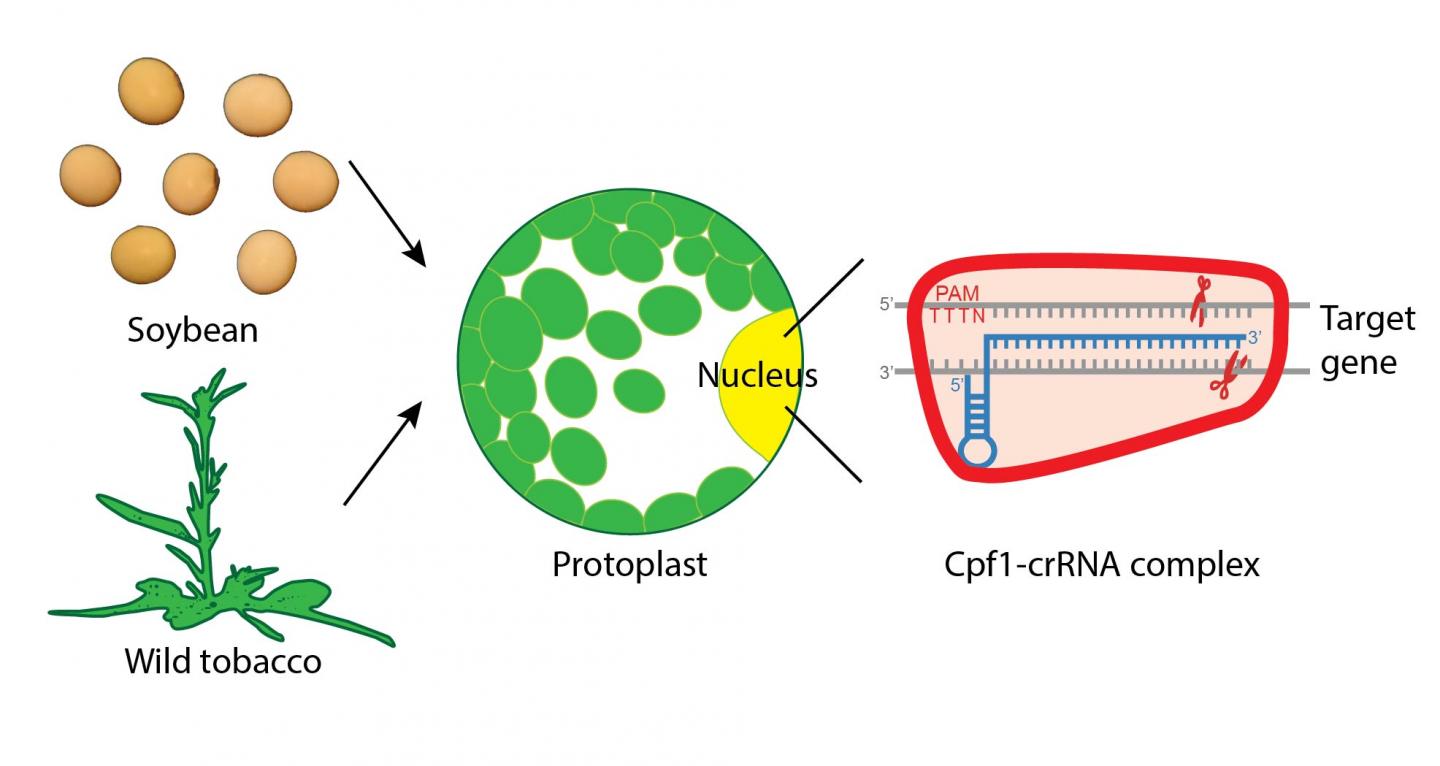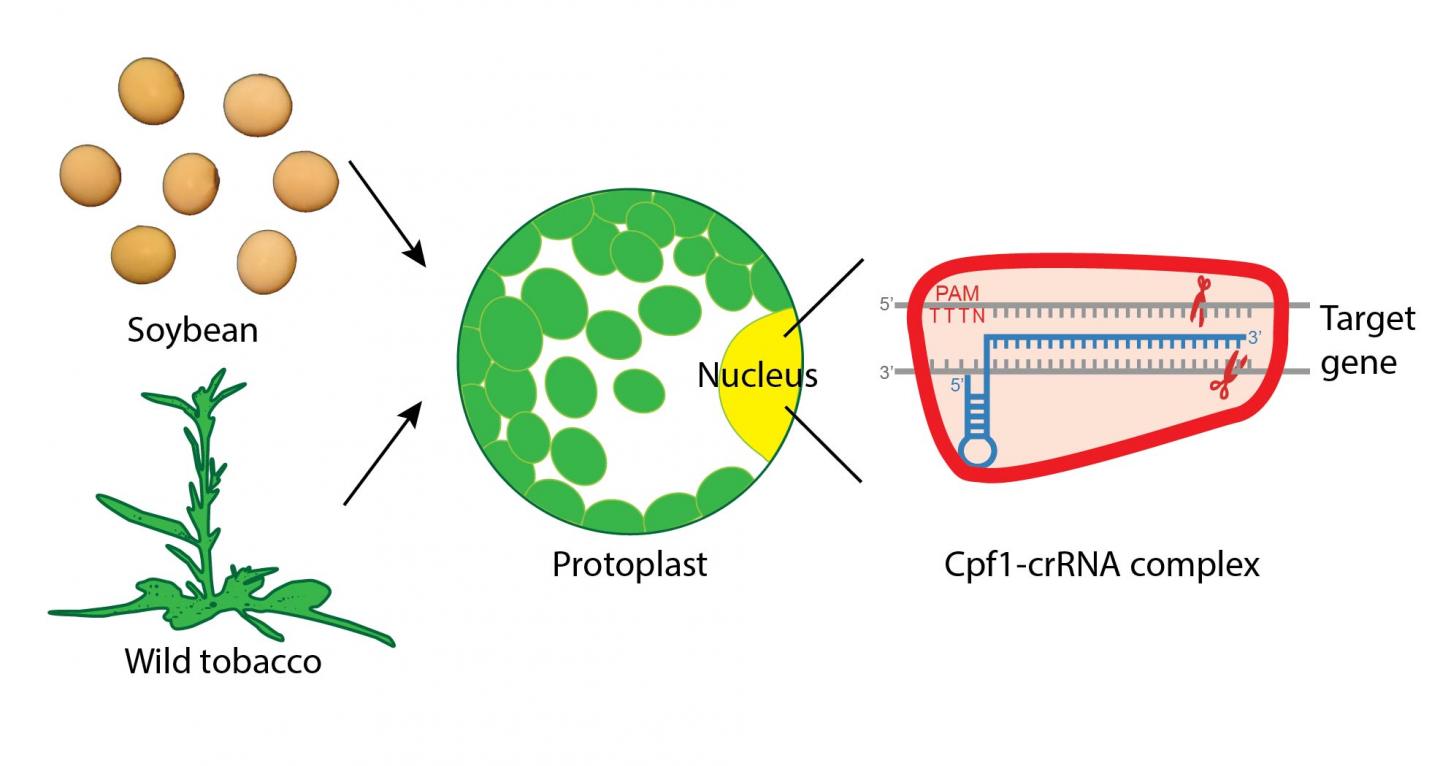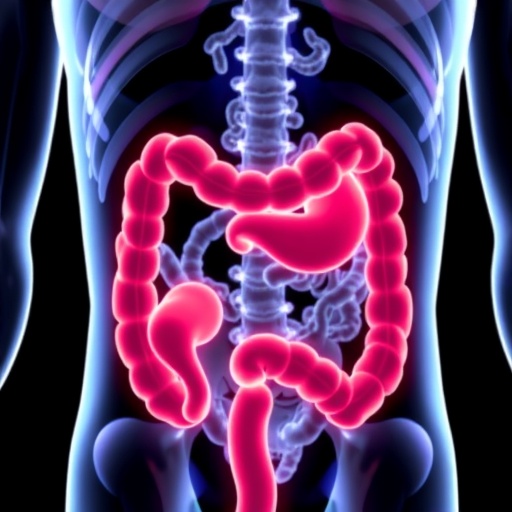
Credit: IBS
A team from the Center for Genome Engineering, within the Institute for Basic Research (IBS), succeeded in editing two genes that contribute to the fat contents of soybean oil using the new CRISPR-Cpf1 technology: an alternative of the more widely used gene editing tool CRISPR-Cas9. The results of this new plant gene editing method, applied to soybeans and wild tobacco genes, are published in Nature Communications.
CRISPR-Cas9 is the third generation gene editing system, widely used in biology labs all over the world. It contains proteins called Cas9, which act like a "gene scissors", and CRISPR-RNA (crRNA), which guide the "scissors" to edit the DNA at the right position.
Previously, IBS scientists employed Cpf1, an alternative to Cas9, to edit human DNA cells. This time, the same research team grappled with editing plant' genes and successfully introduced the CRISPR-Cpf1 complex into plant cells.
IBS biologists designed CRISPR-Cpf1 to cut two of the FAD2 genes in soybeans. These genes are part of the pathway that converts fats: oleic acid into the polyunsaturated linoleic acid. By mutating FAD2 genes, the percentage of oleic acid in soybean seeds increases, which result in a healthier oil.
The team also confirmed that CRISPR-Cpf1 did not cut non-targeted locations within the soybean genome. The results demonstrate that CRISPR-Cpf1 is a highly efficient technique. Moreover, this method is 100% DNA-free. It eliminates the introduction of foreign DNA by using chemically synthesized crRNA. This removes the risk of having leftover foreign DNA, like the DNA used as the template for RNA synthesis.
IBS scientists also discovered at least three benefits of CRISPR-Cpf1 over CRISPR-Cas9: CRISPR-Cpf1 technique has shorter crRNAs, so the RNA can be synthesized chemically; CRISPR-Cpf1 creates larger deletions (7 base pairs) in the target gene, which is good for making the gene completely inoperative; and the type of cleavage left by Cpf1 might help further gene editing processes.
"CRISPR-Cpf1 could be used as a new tool for the development of value-added crops such as a new variety of soybeans with reduced unsaturated fat content," explains Professor KIM Jin-Soo.
###
Media Contact
Dahee Carol Kim
[email protected]
@IBS_media
http://www.ibs.re.kr/en/
############
Story Source: Materials provided by Scienmag





